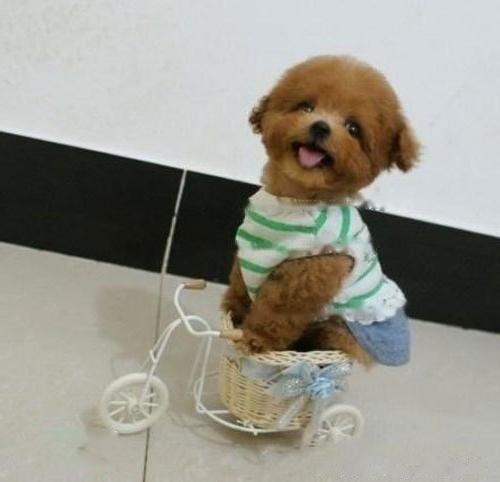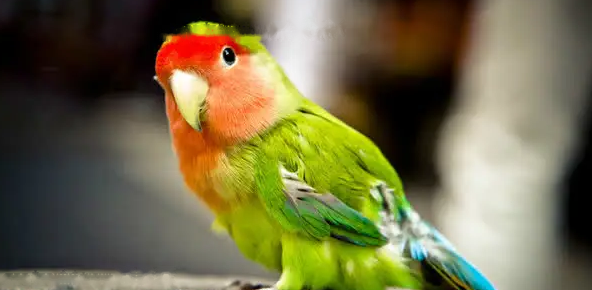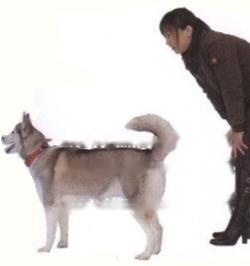TeddyDog Don't look at it's small size, it ranks second in the dog IQ ranking, so if Teddy is trained, Relatively speaking, it is better to train than other dogs, but dogs are dogs after all, so you still need patience when training Teddy. So what are the common teddy training?

teddy
Puppy Obedience
Using puppy obedience is an interesting topic in training. Puppies are generally considered to be six months old before they can begin formal training. But many puppies learn bad behavior before they are six months old. A puppy who is thought to be unable to learn to sit still can learn to bite every shoe it finds, or jump on every guest. The misconception that puppies learn only [bad] behaviors but not [good] behaviors is the source of this paradox. The solution lies in overhauling the way you teach your puppy, not in doubting your puppy's ability to learn. Traditionally, dog training methods have focused on forcing the dog [to obey]. Although [coercion] is an effective tool for punishing serious misconduct, it is done by coercion. Trying to get dogs to learn new behaviors doesn't work so well. This coercive approach makes it easy to suppress all behaviors, not just bad ones; forcing too much training on a dog too early can lead to training failure. To avoid this situation, you should focus on using positive rewards to train correct behavior.
New tool
Everyone knows that when training a dog, there must be a clear signal that tells the dog [NO!]. In fact, a compliment to the dog is just as important when he does it right. If there is no such a signal, it is equivalent to forcing the dog to use [guess], guessing which kind of behavior can be rewarded. This trial-and-error approach takes a lot of time before the dog accidentally guesses right, and there is no reward for trying. Think about it: there is no reward, and it takes a long time to try to succeed; the puppy naturally chooses to give up learning, and even decides that [learning] is worth the loss. A simple good boy signal can quickly make a puppy know he's doing it right and make it feel like the reward isn't out of reach; naturally, the puppy will also prefer to learn.
Associating the signal with the reward
The first step in making the [good dog] signal work is to choose a short, easily recognizable password. A simple example is shortening a sentence like [Good dog, puppy is good, Mommy's baby] to a password like [Good]. At the beginning, while saying [good], I want to give the puppy something to eat. Repeat about twenty times. Note: The order in which you say [Good] first and then give the food is very important; there is a slight pause between saying [Good] and giving the food. Soon the puppy will respond to the password you choose and will start expecting you to give it a prize. That is to say, you have successfully established the password [good]. Now you have one more powerful tool to quickly tell your dog: it's doing the right thing.
Using Targets
The vast majority of puppies resist unpleasantly when they are forced to sit down. A better approach is to trigger the dog's instinct to follow the target. When a person holds some food and puts it on the puppy's nose, it will naturally turn its head with the movement of the food; if the food moves away, the dog will stand up and follow the food.
We can try this method, train the puppy [to sit], and will find the advantages of this method. First, find a good-sized piece of food that your puppy loves, and remember, don't choose a dog biscuit that's too hard, or something that's too chewy. Because then the dog may spend a lot of time chewing the prize hard, making the training progress too slow. Sit in front of the puppy and place the food where he moves his nose to his forehead. Don't move the food so fast that the puppy can't find the food for a while. Also, don't lift the food above his head, or the dog may try to stand up on his hind legs instead of sitting.
If the puppy wants to jump on you, or pounce on the food, say to it in a normal tone of voice: [Wrong] and take the food back quickly. If you are lucky, the puppy will naturally follow the food back, and sit down. As soon as it sits down, say [good] to it, and then give it food. Don't be discouraged if your dog doesn't sit down; some puppies will naturally back away and even stand up for food. Generally speaking, when trying to train a dog to do a certain movement for the first time, if the puppy does not complete the movement, try to let it do part of the movement.
Take training a dog to sit as an example, if your back legs relax when you lift the food above his nose, you should praise him [be good] and give it food. Continue this training and try to relax your dog's hind legs more each time. If this continues, the dog will slowly learn to sit down. Try not to get impatient, or press the puppy's back to let him sit. The meaning of this training method is to induce the puppy to learn with [reward], rather than forcing] the puppy.
If you are successful in getting your puppy to sit every time, you can move on to the next training step. Follow these steps and you will get amazing results very quickly: 1. Say to the puppy [sit down] 2. Move the food to the front of its forehead (the puppy should now sit down) 3. Compliment It is [good] 4. Give it food. This exercise can easily be extended into a [stop in place] movement. Do this by pausing for a few seconds before you say [good], or take a step or two back. If your dog wants to get up before you say [good], say to him, [wrong], and do it again. If the dog is standing still, say to him [good].
and give it a prize to let it know you like it. The secret is: don't keep saying to the dog: [sit down, sit down, sit down], just say it once. The goal of this training is that as soon as you say the password, the dog will respond immediately, instead of doing the action after saying it twice or three times. Don't yell at the dog like the squad leader in the army, this will avoid the dog's timidity and make it feel that learning is a fun experience.
Training the puppy [walking over]
Training a puppy to come toward you when you call it is an important behavioral exercise. The following steps can be quickly learned by the dog: 1. Ask the puppy to sit. 2. Take a step back. 3. Say [come] to the puppy. 4. Put the prize at your feet and make sure the dog sees the prize. 5. The puppy should get up and come over at this time, wanting to eat the prize. 6. Before the puppy's mouth touches the prize, say Good boy to it. 7. Gradually extend the time the puppy sits still and the distance between the prize and the puppy. 8. Try saying [come] to the puppy outside of training.
How to Apply Punishment
When training a puppy, you must develop the idea that punishment is used to correct inappropriate behavior. [Punishment] has become almost a taboo over the past few years. Many people mistakenly believe that punishment is cruel or even a useless training tool. In fact, as long as the punishment is applied in the right way and at the right time, it can be quite effective when it is applied to prohibit a puppy from doing a certain behavior. Traditional punishments are usually imposed at will after the dog has made a mistake for a long time, according to the owner's mood. These old-fashioned forms of punishment are not so much training as revenge for the dog's disobedience. People who train puppies with full positive rewards are quite respectable, but those who know how to use punishment correctly and achieve their training goals are even rarer. In the frustration of failing to train, most owners resort to old-fashioned punishments such as spanking the dog.
It is ironic that while the social climate has changed and traditional punishments are no longer used, examples of cruelty to animals have continued unabated. Removing this paradox requires rethinking our moral view of [punishment] and how to properly use this powerful training tool. We generally think that a person of good morals would never inflict pain on his puppy. But this argument is good in theory, but impossible in practice. Take taking a puppy to the veterinarian as an example: we have the vet give the puppy injections, draw blood, and rudely grope it; when the puppy is old enough, we may even have it stabbed and ligated. It would be hypocrisy if we insist on [not letting the puppy suffer]. We will make dogs uncomfortable or even miserable for health reasons; we are not willing to punish puppies for training requirements. To change this prejudice, we must revise our morals to be based on the principle of [do no harm to the dog] rather than a hypocritical insistence of [no pain to the dog].
Changing the habit of jumping on people
For example, to get rid of a dog's habit of jumping on a guest properly, it doesn't have to hurt it. First, you have to find something your dog really doesn't like - like a water gun or a spray canister filled with water. Then, try to get the puppy to associate the water pistol with the signal [Can't do this anymore] (you can use the password [No]). [No] This password is to the puppy telling it that [this behavior will be punished]. The timing of [no] is very important: the puppy must be told the moment it makes the wrong move, and the water spray can be delayed for a few seconds. For example: puppy jumps on a person--
1. puppy starts jumping
2. says [no] to it
3. to puppy The dog sprays water
4. Leave it alone (about a minute or two)
5. Continue this process until the dog stops jumping
6. When the puppy starts to jump again next time, say to it [sit down]; if it sits down, give it a prize. It should be noted that although the general training code is that the puppy does the right thing, it is rewarded; but in practice, if the dog accidentally associates this reward with the wrong behavior pattern, it will cause problems.
For example: The puppy jumped on top of the mother, the mother yelled [no] and sprayed the puppy with water, the puppy sat down obediently, and the mother rewarded it. In this way, the dog may mistakenly think that as long as it can endure the feeling of being sprayed, it will be rewarded by its owner. It is better to wait until the bad behavior has been completely corrected before giving rewards to strengthen the impression.
Puppy biting prevention
Another situation where a punitive education method applies is dog biting prevention. The first line of defense to prevent puppy biting
is to keep your dog from touching things it shouldn't bite. Put your shoes in the shoe cabinet and close the door; put expensive books on the bookcase, not on the coffee table. In short, put away every precious thing and keep away from puppies. But while putting things away is a good idea, this approach has two fatal flaws. In the first place this doesn't teach the puppy to avoid dangerous things and places. Second, most owners underestimate a puppy's ability to find chews.
The only way to ensure a safe environment for a dog is to teach him what to play with and what to stay away from. The first step in training is to teach the dog the password [No]. The right time to say [No] is an important factor in whether the puppy understands why he is being punished. There is a great training item to use for this workout - extension cords. A wire wrapped in rubber insulation is one of the most dangerous things to an unsuspecting puppy. For puppies, the extension cord feels and bites exactly the same as the power cord of general electrical appliances, the difference is that the extension cord is not plugged in. Put the extension cord in front of the puppy, then take it out of sight, hide in a corner, and observe its movements (you can also use a mirror to observe). As soon as the puppy discovers the new toy and starts to bite, say [No!] and spray it with water; then take the stuffed toy and give it a bite. Do this practice regularly until [biting the wire] becomes a no-no.
The same method can also be used to prevent dogs from biting shoes, books, magazines or other training. If you consistently teach your puppy to bite only when you're complimenting or petting, biting will be greatly reduced
![[Dog Training 5] The training method of pet dog dining etiquette](/static/img/12192/12192_1.jpg)




